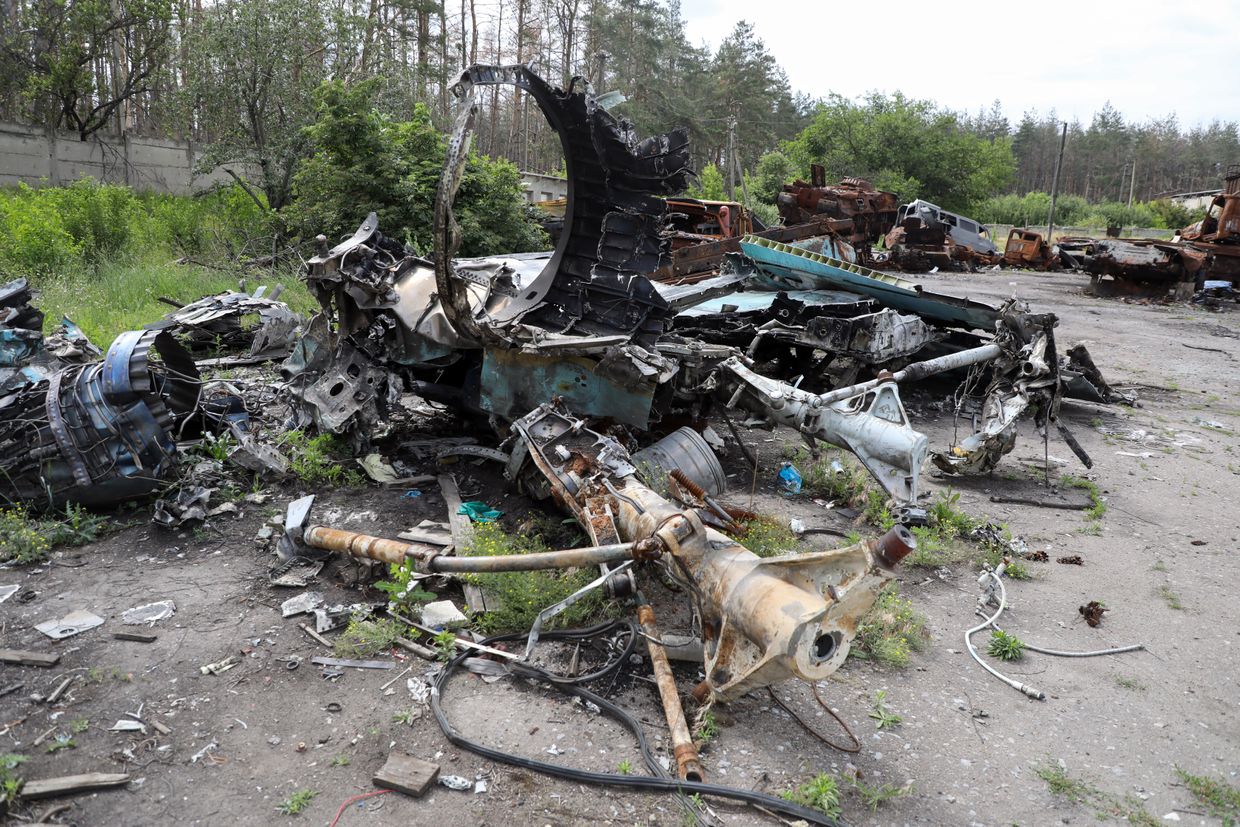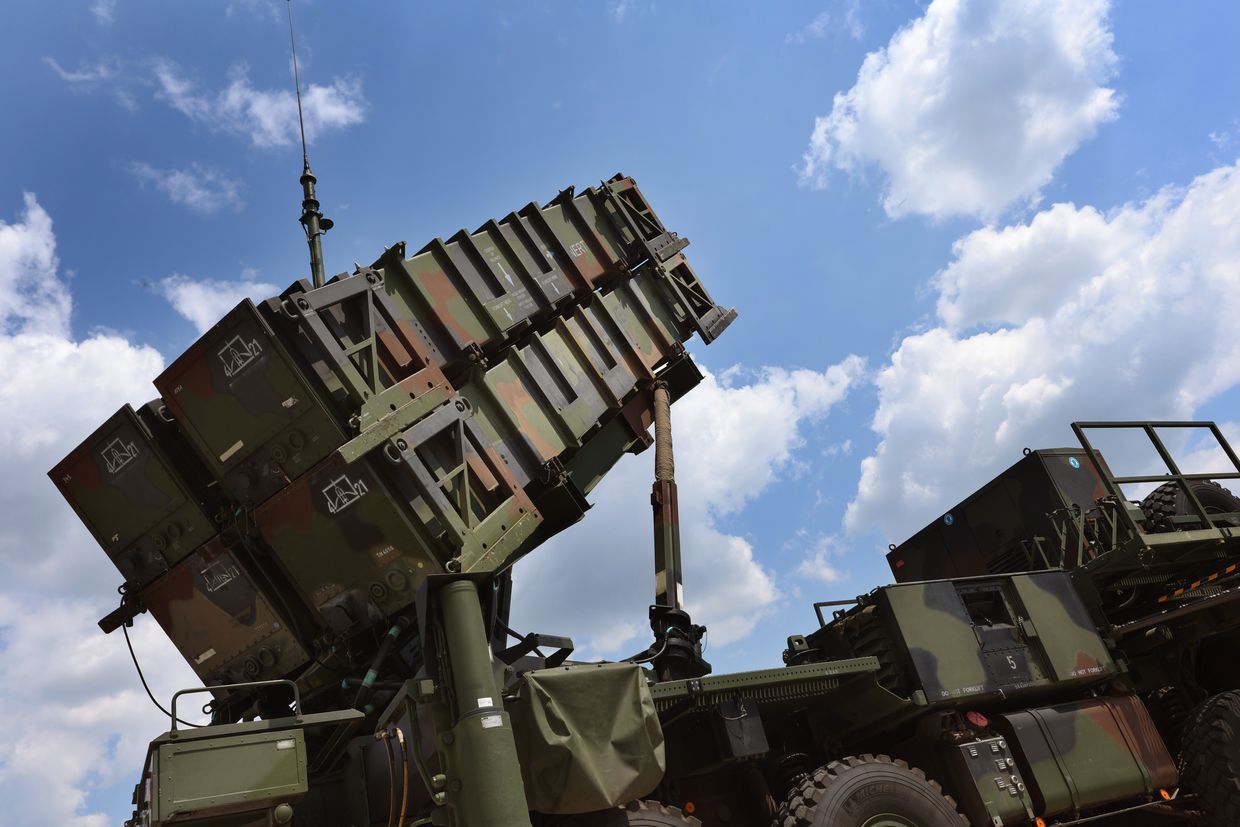Ukraine destroyed 13 Russian military aircraft just in 2 weeks
Ukraine has reported the downing of 13 Russian warplanes within the last two weeks, marking one of the highest losses for the Russian Air Force since the early days of the full-scale invasion. The list includes 10 Su-34 fighter bombers, two Su-35 fighter jets, and one rare A-50 military spy plane. Another A-50 aircraft was downed a month prior. The destruction of these aircraft coincides with Russia's attempts to advance on the battlefield following the withdrawal of Ukrainian troops from Avdiivka and three villages in Donetsk Oblast, as well as Ukraine's widely acknowledged ammunition shortage.

Ukraine's General Staff has reported that Russia's total losses during the ongoing conflict amount to about 670 aircraft units, including 345 planes and 325 helicopters. Most of these losses occurred in the early days of the war. Air Force branch commander, Lieutenant General Mykola Oleschuk, urged Russia to consider decreasing the number of sorties in light of these significant losses.
In recent aggressive attacks against Ukrainian troops in the east, Russian forces have reportedly "overcome the fear" of using aircraft directly over the battlefield. This shift in tactics has led to an increased use of guided aerial bombs, dropped from planes such as the Su-34 and Su-35. Ukraine is currently not equipped to counter these guided aerial bombs effectively. Air Force spokesman Yuriy Ihnat mentioned that in the Avdiivka sector alone, hundreds of such bombs have been launched at Ukrainian positions. However, Ihnat also stated that Ukraine now has the necessary tools to destroy planes at longer distances.
Ukraine's recent success in countering Russian aviation may be attributed to its increased aggression in risking Patriot launchers closer to the front lines, according to Justin Bronk, a senior research fellow at the Royal United Services Institute (RUSI). Ukraine's Air Force spokesman mentioned the importance of providing Ukraine with more anti-aircraft-guided missiles to enhance its capabilities. The country has a layered air defense system, including medium-range systems like IRIS-T and NASAMS, as well as long-range systems such as Patriot, SAMP/T, and S-300. The specific weapons used by Ukraine to counter Russian aviation remain undisclosed.

Ukraine's Patriot air defense system, primarily used to repel Russia's regular missile strikes, demonstrated its effectiveness in May 2023 by immediately destroying five aircraft units over Bryansk Oblast in Russia. The destroyed units included Su-34 and Su-35 planes, two rare Mi-8MTPR-1 helicopters, and one Mi-8 helicopter. The success of this operation was acknowledged by Ukraine's Air Forces, highlighting the system's capabilities in countering Russian aerial threats.

Ukraine achieved significant success by destroying Russia's A-50 spy plane on February 23 over Russian territory near the town of Yeysk, approximately 200 kilometers from the front line. The Ukrainian military might have used the Soviet-era S-200 air defense system for this operation, as reported by Ukrainska Pravda on February 23, citing an unnamed source from Ukraine's military intelligence agency. While Russia claimed that Ukraine had allegedly revived and used S-200 anti-aircraft systems, which Ukraine officially withdrew from service in 2013, Ukrainian authorities have not confirmed the modernization and utilization of the S-200.
In January, Ukraine reportedly shot down the first A-50 over the Sea of Azov and damaged an Ilyushin Il-22 plane that operates as an airborne command post along with it.
The destruction of two A-50s in 2024 cost Russia about $700 million, while the total number of such aircraft is down to six, according to Ukraine's Military Intelligence Chief Kyrylo Budanov. Experts say it's too early to link the recent uptick in aircraft losses to the downing of the A-50, which provides several critical functions for Russia's Air Force, such as detecting air defense systems, guided missiles, and coordinating targets for Russian fighter jets.
"The number of A-50s Russia has left is enough to cover the airspace around the clock and conduct reconnaissance activities," Kovalenko told the Kyiv Independent.
"The nuance is the distance at which you need to be. Intelligence information depends on this."
After the destruction of the second A-50, Russia has not used these aircraft for several days. Air Force spokesman Ihnat believes that this could have helped Ukraine shoot down Russian planes at longer range.
The destruction of numerous aircraft over the past two weeks has helped push Russian planes away from the front line and decrease the intensity of the use of aerial bombs.
Ukraine’s sea exports reach record monthly levels since full-scale invasion
Ukraine exported eight million metric tons of goods through the Black Sea corridor in February, reaching a monthly record level since the beginning of Russia’s full-scale invasion, the Infrastructure Ministry reported on March 1.
Ukraine established a temporary Black Sea corridor for civilian cargo ships following the collapse of the U.N.-brokered Black Sea Grain Initiative in July last year after Russia had pulled out of the agreement and threatened to target all vessels sailing to Ukrainian ports.
The route doesn’t lead directly through international waters to the Bosphorus Strait but hugs the coastlines of Ukraine and NATO members Romania and Bulgaria, allowing ships to bypass the effective blockade imposed by Russia.
Out of the eight million metric tons of goods exported by sea in February, 5.2 million were Ukraine’s agricultural products, the Infrastructure Ministry said on Telegram.
Ukraine’s exports through the Black Sea ports in Odesa Oblast are gradually approaching pre-war levels, according to the ministry.
More than 90% of all Ukraine’s agricultural exports go through the ports in Odesa Oblast and those on the Danube River. Since the establishment of the temporary Black Sea corridor, Ukraine has reportedly exported almost 28 million metric tons of cargo, most of which are grain and (plant) oil, to 42 countries.
"Ukraine remains one of the key guarantors of food security. Especially with regard to grain exports to African and Asian countries," added the ministry.
Kharkiv is not protected enough to advise people to come back – Zelenskyy
Title: President Zelenskyy Addresses Security Concerns in Kharkiv, Urges Caution in Residents' Return
In a recent press conference held in Kharkiv, President Volodymyr Zelenskyy discussed the current security situation in the city, emphasizing that the level of protection is not sufficient for residents to consider returning at this time.
Zelenskyy acknowledged the importance of ensuring adequate security measures before encouraging the return of Kharkiv residents. He stated, "Regarding the return of Kharkiv residents: currently, I don't believe Kharkiv is adequately protected for me to recommend people come back. It's the decision of the Kharkiv residents. The situation today is such. When we are adequately protected, our military and I will certainly communicate that to the residents of Kharkiv."
The president's cautious approach reflects the ongoing challenges faced by Ukrainian forces in defending key cities against Russian aggression. The security concerns extend beyond the immediate need to fortify air defenses, as Zelenskyy highlighted the necessity of pushing Russian forces further away from the city.
Zelenskyy addressed potential threats from advanced S-300 systems, stating, "We recognize our shortcomings. It's crucial not just to fortify the air defense of Kharkiv and Kharkiv Oblast, but also to push the Russians away. Otherwise, even with strengthened air defense systems, protecting Kharkiv will be extremely challenging."
The president's remarks shed light on the complexity of the security situation in Kharkiv and the broader region. As Ukrainian forces continue to confront Russian advancements, the need for a multi-level defense strategy becomes increasingly evident. Enhancing air defense capabilities is just one facet of the comprehensive approach required to safeguard Kharkiv and its residents.
Zelenskyy's commitment to transparent communication with the public underscores the gravity of the situation and the collective responsibility in navigating these challenging times. The president's call for caution and patience reflects a pragmatic understanding of the security landscape, prioritizing the well-being of the residents.
As the conflict unfolds, the resilience of Ukrainian forces and the determination of the leadership to protect key cities like Kharkiv remain critical. The international community closely watches developments, emphasizing the importance of diplomatic efforts to bring about a resolution that ensures the security and stability of the region.